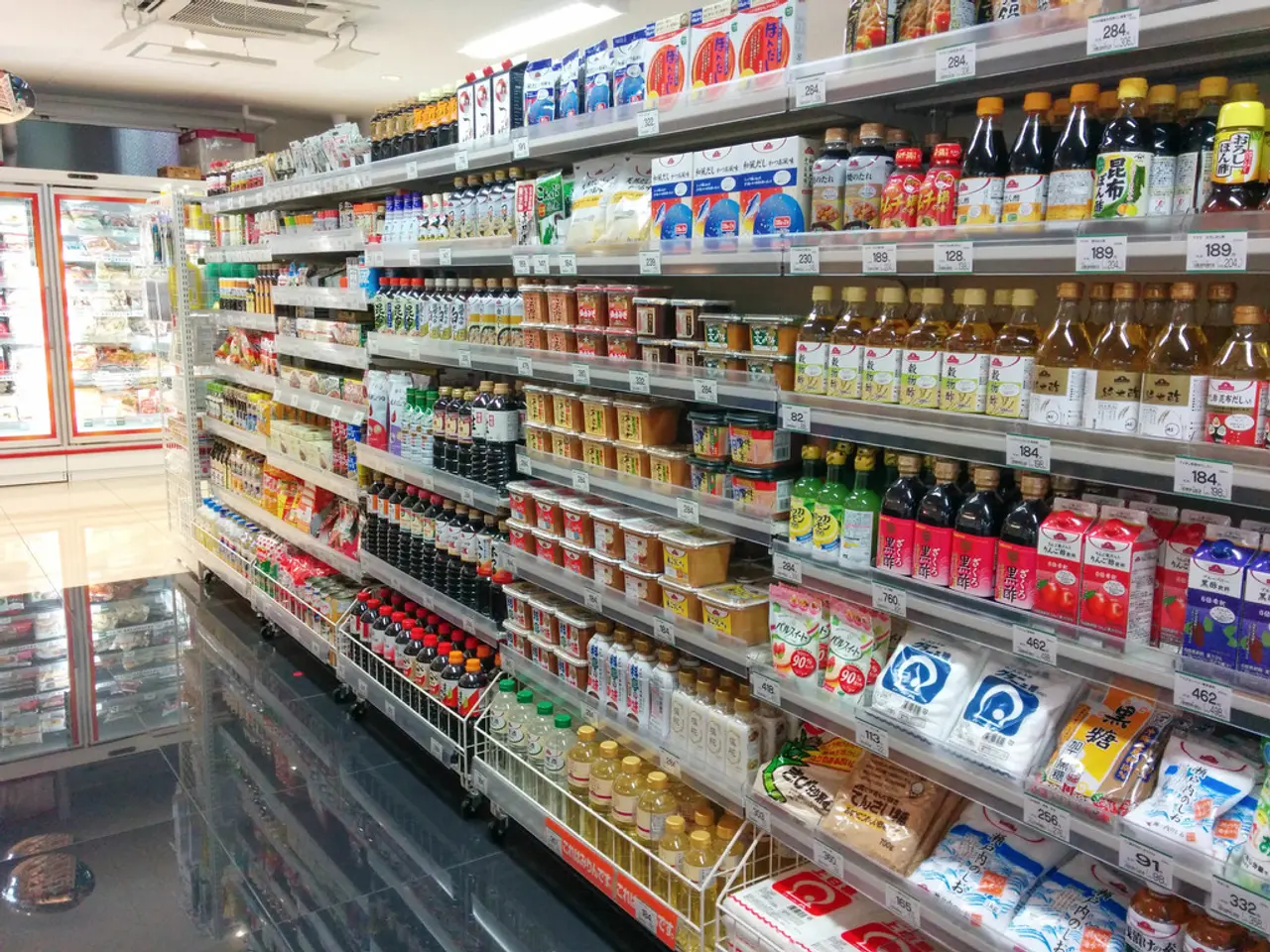Hoka physical retail locations serve as the main outlets for selling items at full price
=========================================================================================
In a significant shift, traditional brick-and-mortar stores have proven to be a crucial factor in Deckers' success, according to CEO Stefano Caroti. The footwear giant, known for brands like Hoka and UGG, reported impressive sales figures for Q1 FY26.
Deckers' Q1 net sales rose nearly 17% year over year to $964.5 million. This growth was driven by a substantial increase in wholesale net sales, which rose 26.7% to $652.4 million, and modest DTC growth of 0.5% to $312.2 million.
Hoka, one of Deckers' flagship brands, experienced a 20% increase in net sales, reaching $653.1 million. The brand's success was fueled by record wholesale reorders in Europe and expanded distribution through retail partners like Intersport and JD Group. These expansions were driven by strong in-store sell-through that outpaced wholesale revenue growth, indicating that physical retail locations enhanced availability and visibility, driving higher demand.
UGG, another popular Deckers brand, saw its Q1 net sales grow nearly 19% to $265.1 million. Interestingly, UGG's retail stores outperformed e-commerce within the DTC channel, demonstrating that the brand's consumers prefer the in-store experience for premium purchases.
Deckers' model integrates physical retail and digital channels, using flagship stores and immersive experiences to increase margins, brand loyalty, and overall earnings growth. DTC sales rose 17% year over year, reaching $397.7 million in Q2 2025, supported by strong physical retail performance.
International sales have driven most of Ugg's growth, with the largest gains in China and the Europe, Middle East, and Africa region. Wholesale channels expanded aggressively overseas, driving growth in premium markets. As a result, Deckers' international net sales rose 49.7% to $463.3 million.
However, the company faces challenges in maintaining its gross margin, which shrank to 55.8% from 56.9% a year ago. To counter this, Deckers hopes to recapture about $75 million via price hikes and "partial cost sharing with factory partners."
Tariffs on goods from Vietnam pose a significant threat to Deckers. If tariffs on these goods rise from 10% to 20%, Deckers could face a $185 million tariff impact to its cost of goods sold in fiscal year 2026. This uncertainty has prompted Deckers to withhold full-year guidance.
Despite these challenges, Deckers' brick-and-mortar strategy has proven to be a key driver of growth for its brands, especially Hoka and UGG. The physical stores enable deeper consumer engagement, boost sell-through rates, and complement online strategies, underpinning their strong revenue and margin growth.
References:
- Deckers Q2 2025 Earnings Release, 2025.
- Deckers Q1 2026 Earnings Release, 2026.
- Footwear News, "Deckers Brands Thrive on Brick-and-Mortar Retail," 2026.
- GlobeNewswire, "Deckers Brands Thrive on Brick-and-Mortar Retail," 2026.
- The editorial on Deckers' Q1 2026 earnings highlights that the company's AI-driven research into market trends identified a significant demand for physical retail stores, leading to the success of brands like Hoka and UGG.
- The research conducted by Deckers revealed a surprising trend in consumer behavior – a preference for in-store shopping for premium purchases, such as UGG products, despite the growth of e-commerce.
- In light of the success of its brick-and-mortar stores, Deckers' policy has been to integrate these physical retail locations with its digital channels, aiming to enhance margins, brand loyalty, and overall earnings growth.
- As the future of sports is increasingly being influenced by science and technology, Deckers' expansion into new markets is expected to be facilitated by AI and advanced research in materials science for the development of innovative footwear solutions.






